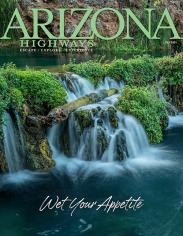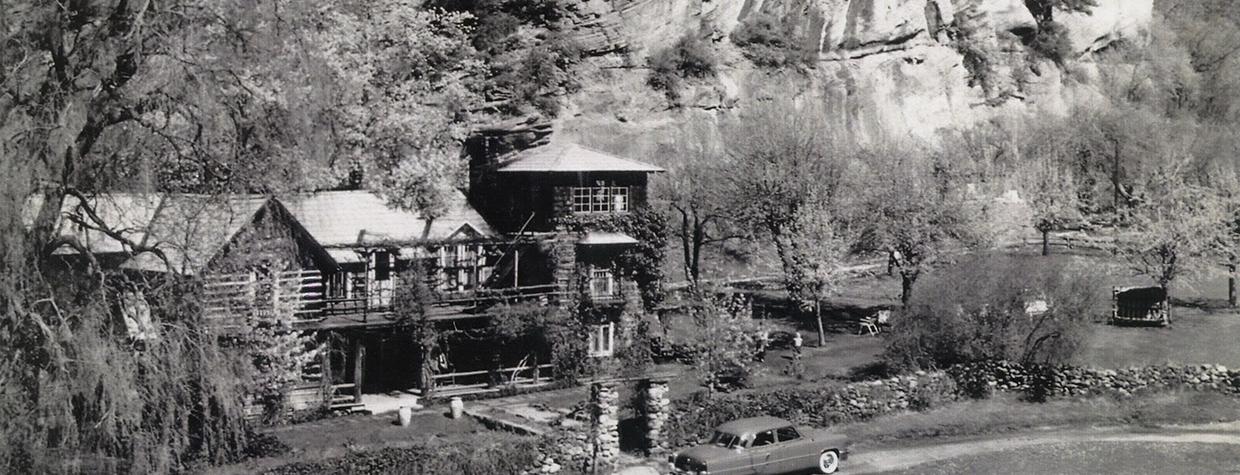In 1926, Carl Mayhew was newly in love. No doubt, he still loved his wife of 14 years, and Ethel had no cause for jealousy. Because Carl was not infatuated with another woman. He was smitten with the lodge he had recently purchased in Oak Creek Canyon. “This wonderful place,” he wrote, “like a great sunken garden of orchards, roses and vine-covered buildings, is located at the bottom of the canyon … a canyon of mystery, with its great buff walls of sandstone eroded into fantastic shapes, silhouetted against the glorious Arizona sky.”
Ethel likely felt less enchanted. On the couple’s first visit to the canyon, their Ford Model A had to be pushed out while Ethel carried their young daughter up the steep grade. She vowed never to return. Years later, Ethel recalled that when they bought the lodge, “there were weeds as high as your head” and “pigs were running wild.” But under her care, the lodge became renowned for its orchards, its prize-winning dahlias and, especially, Ethel’s cooking.
Back then, the canyon was remote and difficult to reach, which was why legendary hunter Bear Howard built a cabin there after his escape from a California jail around 1880. No doubt, the romance of the tale added to the allure of the place, as Carl incorporated both the story and Howard’s cabin into his newly christened Mayhew’s Oak Creek Lodge.
A photographer of some repute, Carl was a relative newcomer to Arizona. Having arrived in Flagstaff in 1922, he fell in love with the canyon after Jesse Lasky, co-founder of what would become Paramount Pictures, hired him to help with a silent film he was producing based on a Zane Grey novel. Released in 1923, The Call of the Canyon set the Mayhew family, as well as Sedona, on a new course.
Expanding on what his predecessors, the Thomas family, had built after buying Howard’s cabin and homesteading the land, Carl decorated the lodge with photos he’d made in Paris during World War I. An ancient cherry tree brushed against second-story windows, and a grapevine climbed through the floor, wandering through the lodge and out again.
Given its origin story, it’s not surprising that in its early days, the lodge hosted a constellation of Hollywood stars as bright as those in the sky above. After a day of fishing, croquet or tennis, guests gathered for cocktails before wandering into the dining room overlooking the creek.
Carl died in 1943, but the family kept the lodge running before selling it to the U.S. Forest Service in 1969. Left to deteriorate, it burned to the ground in 1980. A few stone ruins and fruit trees near the West Fork Oak Creek Trailhead remain as a curiosity to the multitudes who still heed the canyon’s call.

